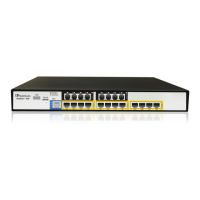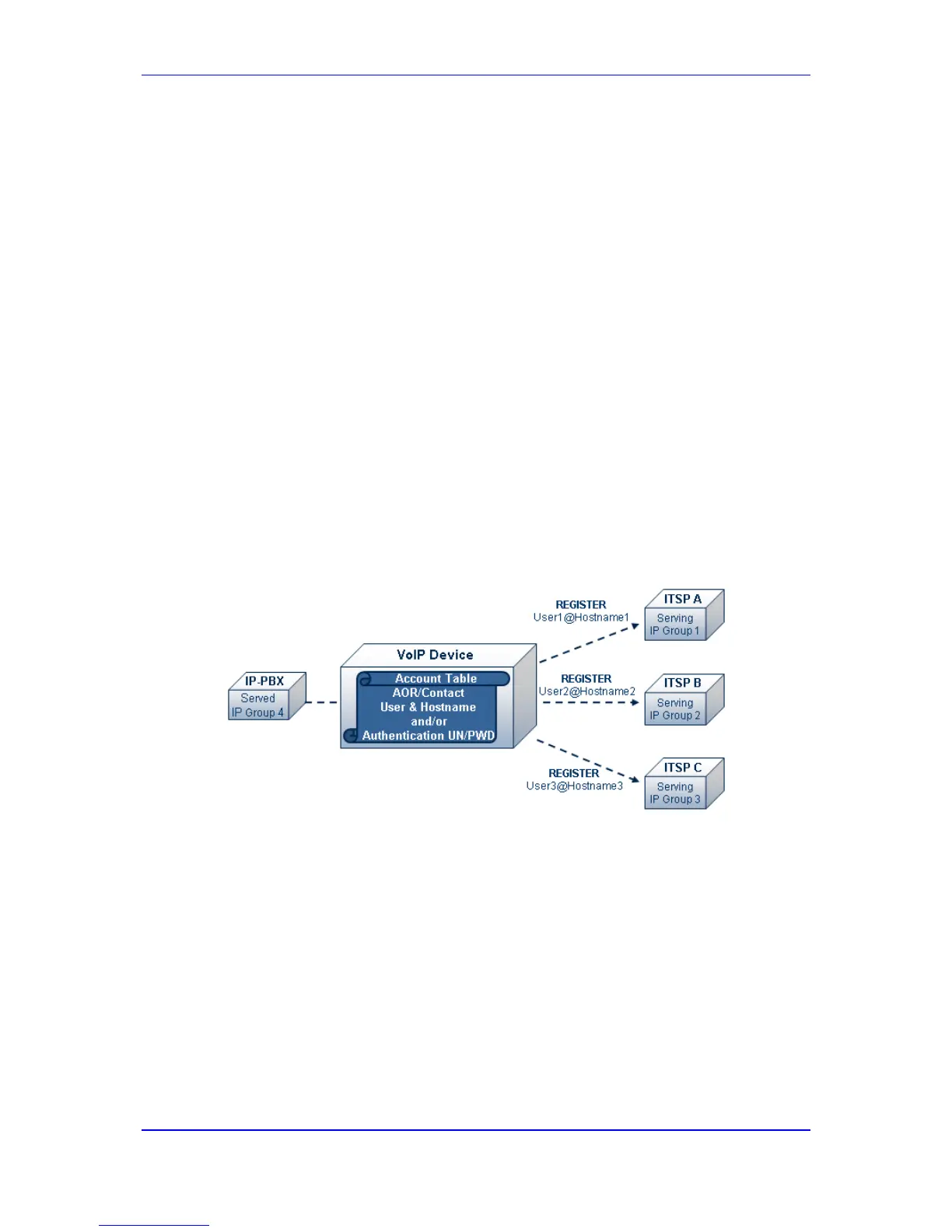22.1.3 Inbound and Outbound IP Routing Rules
The device's IP-to-IP call routing is performed using the following two routing rule stages:
1. Inbound IP Routing Mapping Rule: Identifies the received call as an IP-to-IP call
based on various characteristics such as the call's source IP address, and assigns it to
an IP Group.
2. Outbound IP Routing Mapping Rule: Determines the destination (i.e., IP address) to
where the incoming call associated with a specific source IP Group is finally routed.
The destination address is typically denoted by another IP Group (destination IP
Group) and therefore, the call is sent to the IP address that is defined by the Proxy Set
associated with this IP Group. If the destination is a User-type IP Group, the device
searches for a match between the request-URI of the received INVITE to an AOR
registration record in the device's database. If a match is found, the INVITE is sent to
the IP address of the registered contact.
22.1.4 Accounts
Accounts are used by the device to register to a Serving IP Group (e.g., an ITSP) on behalf
of a Served IP Group (e.g., IP-PBX). This is necessary for ITSPs that require registration to
provide services. Accounts are also used for defining user name and password for digest
authentication (with or without registration) if required by the ITSP. Multiple Accounts per
Served IP Group can be configured for registration to more than one Serving IP Group
(e.g., an IP-PBX that requires registering to multiple ITSP's).
Figure 22-4: Registration with Multiple ITSP's on Behalf of IP-PBX
22.2 IP-to-IP Routing Configuration Example
This section provides step-by-step procedures for configuring IP-to-IP call routing. These
procedures are based on the setup example described below. In this example, the device
serves as the communication interface between the enterprise's IP-PBX (located on the
LAN) and the following network entities:

